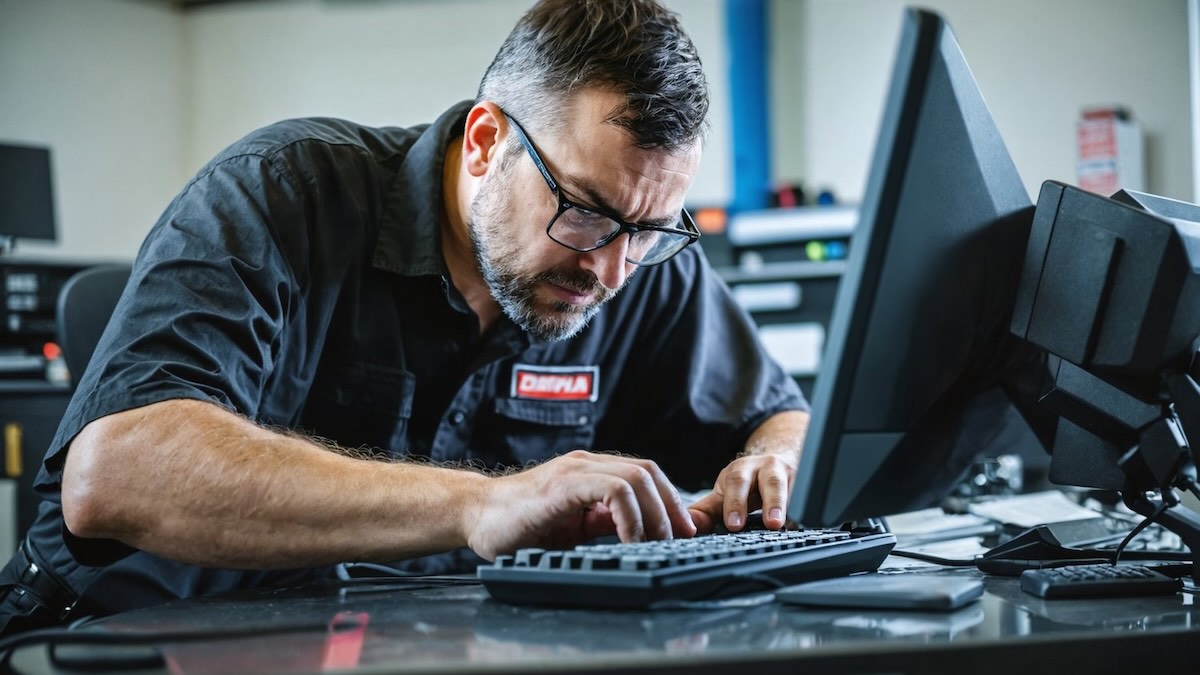Why Auto Techs Hate Paperwork, and How We Can Finally Get Rid of It
Skilled automotive technicians spend 30% of their time on screens instead of turning wrenches. Here's how voice-first AI technology is finally changing that.

It's 4:17 PM on a Friday. Your hands are covered in grease, you've just figured out the problem that's been stumping you all afternoon, and there's one more car in the queue before you can head home.
But first, you need to document everything you just did.
You wipe off as best as you can and start typing. The customer is waiting. The service manager is asking for an update. The next car needs to get in the bay.
Sound familiar?
If you're an automotive technician you know this frustration intimately. Your tools have gotten better, cars have gotten a lot more sophisticated, but somehow techs are spending more time than ever wrestling with software and writing stories.
The Numbers Don't Lie
Here's what most people don't realize: skilled automotive technicians, the same people who can diagnose a complex engine problem in minutes, spend roughly 30% of their workday staring at screens instead of turning wrenches.
Let that sink in. Nearly a third of every shift is lost to typing, clicking, and wrestling with software that was clearly designed by people who've never worked in a service bay.
Worse, about 12% of warranty work gets denied by manufacturers, often due to incomplete or repair stories. For the average dealership, that's about $200,000 in lost revenue annually, not to mention countless hours of rework and frustrated customers.
Meanwhile, technicians are burning out. The industry is facing a massive labor shortage, with over 600,000 unfilled positions nationwide. And what are we doing? We're taking our most skilled workers and asking them to be data entry clerks.
It's like hiring a surgeon and making them spend a third of their day filling out insurance forms.
The Hidden Cost of "Efficiency"
The real tragedy isn't just the time lost—it's everything that comes with it.
Technician burnout is real. When skilled professionals spend more time fighting software than practicing their craft, job satisfaction plummets. Great techs leave for shops with fewer headaches, or they leave the industry entirely.
Quality suffers. When documentation is rushed, important details get left out. Warranty claims get rejected. Customers have to bring cars back for the same problem. Trust is eroded.
Shops lose money. Every minute spent on data entry is a minute not spent generating service revenue. While a tech is documenting their last RO, the next paying job is just sitting in the queue.
Customers wait longer. Service appointments stretch out, not only because the repair is complex, but because the paperwork and approval procedures can be overwhelming.
The kicker: most of the stories written aren't even that useful. How many repair orders actually get read? Do any of the vehicle quirks get folded back into community knowledge? Does the customer even know what the shop did?
It's a system that prioritizes jumping through hoops while obscuring the very thing customers pay for: expert hands-on problem solving.
Why "Better Software" Isn't the Answer
Every few years, the industry gets excited about a new management system or digital workflow tool. The promise is always the same: "This will make your process faster and easier!"
More technology isn't the solution. We need a different way to work with technology.
Traditional shop management systems are built around forms, fields, and databases. They're designed for people sitting at desks, not for professionals working with their hands. Adding more features and fields just makes the problem worse.
The fundamental assumption is wrong. We keep trying to make technicians better at using computers, when we should be making computers better at working with technicians.
The Voice Revolution Changes Everything
So what's the alternative?
Think about how we naturally communicate when working through a complex problem. We don't think in forms and fields. We talk it out.
How would a technician naturally communicate the status of a repair job to a colleague?
"Okay, so I've got a 2018 Camry with a P0171 code. The customer says it's been running rough for about two weeks. The air filter's clean. Mass airflow sensor readings look normal. I pulled the intake manifold, and there's a cracked vacuum line near the throttle body…"
Now imagine if you could just… say that. Out loud. While you work. And have it automatically transformed into clean, professional documentation that satisfies customers, managers, and warranty administrators.
That's not science fiction anymore. Voice-first AI technology is finally sophisticated enough to understand automotive context, terminology, and workflows. It can distinguish between diagnostic steps and repair procedures. It knows the difference between part numbers and labor codes. It can even format everything according to manufacturer requirements.
That's technology that adapts to how technicians actually work, instead of forcing technicians to adapt to how computers want to be used.
The Future Is Hands-Free
The service department is on the verge of a revolution. Voice-first AI assistants designed specifically for the shop floor are emerging, and early adopters are seeing dramatic improvements in both efficiency and job satisfaction.
Imagine technicians who can:
- • Document repairs in real-time without stopping work
- • Generate warranty-compliant reports automatically
- • Focus 100% of their attention on the actual repair
- • Go home on time because documentation happens as they work
AI can't eliminate technicians (for one thing, they have hands); but it can eliminate the administrative burden that keeps them from doing what they do best.
Ready to see how this works in practice? The transformation is already happening in forward-thinking shops across the country. Technicians are getting more wrench time, customers are getting faster service, and shop owners are seeing real ROI.
The question isn't whether AI-native, voice-first tools will become standard in automotive service. It's whether your shop will be an early adopter or a late follower.
Want to learn more about how AI co-pilots are transforming automotive workflows? Book a demo to see this technology in action. And follow our journey as we document the future of automotive service.
About the Author: Dave is the founder of RO-bot, an AI co-pilot designed specifically for automotive technicians. After hundreds of conversations with service professionals across the industry, he started RO-bot to free technicians' hands from the shackles of bad software.
